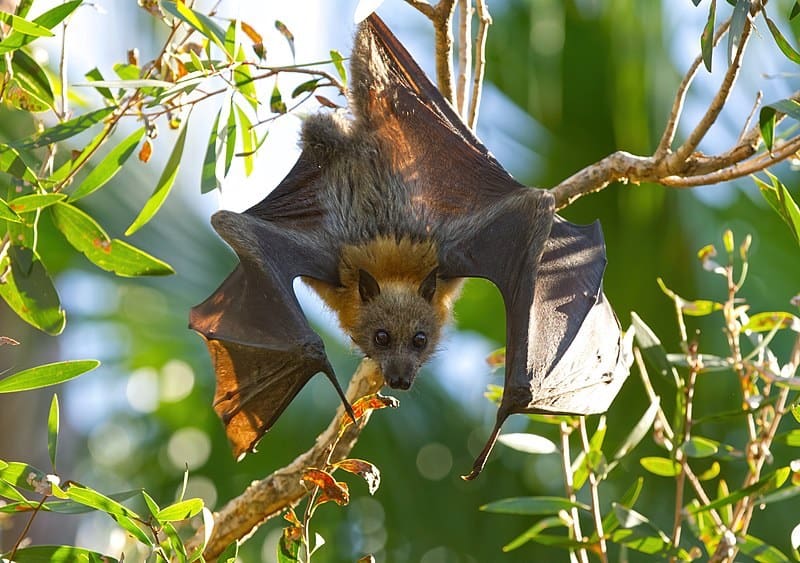Australia’s flying foxes are modern-day frequent flyers capable of notching up epic journeys of more than 12 000km, a new study shows.
The results have surprised scientists, who thought the mammals remained fairly local and only engaged in relatively short-range trips.
Trips covering 6 000km are quite common
But researchers at Western Sydney University found that trips of 1 400km to 6 000km are common. One grey-headed flying fox was tracked travelling 12 337 kilometres in a criss-cross pattern between Melbourne and central Queensland over a period of 1 629 tracking days.
During this remarkable sequence of journeys, it visited 123 roosts located in 37 different local government areas.
“We found that individual flying foxes can literally travel thousands of kilometres a year, criss-crossing their entire range, and sometimes multiple times,” said Dr Justin Welbergen, Associate Professor of Animal Ecology.

Are in the same league as migratory birds
He said the bats were “even in the same league as some migratory birds” or even whales, which travel enormous distances.
For the study, three species – the black flying fox, grey-headed flying fox and the red flying fox – were tracked over 60 months using 755 roost sites.
The study was published this week in the peer-reviewed academic journal BMC Biology.
Mobile individuals that wander nomadically
“Our findings indicate that flying-fox roosts are better viewed as parts of a network of ‘staging posts’ that provide temporary shelters to extremely mobile individuals that wander nomadically throughout much of eastern Australia,” Welbergen said.
“This contrasts with the conventional portrayal of a roost as being home to a resident population made up of the same individuals.”
He added: “It has long been recognised that flying foxes have the capacity to travel long distances; however, the vast scale of the movements among roosts shown by our study indicates that nomadism is in fact a fundamental aspect of flying-fox biology. This necessitates a re-evaluation of how these fascinating animals are managed and conserved.”
Key seed and pollen dispersers in Australia
According to the researchers, Australia’s flying foxes are amongst the largest mammals in the world that are capable of powered flight.
They are highly mobile, which is thought to make them key seed and pollen dispersers in Australia’s fragmented forest ecosystems.
However, their mobility also facilitates transmission of disease and often brings them in conflict with humans, and so they require a precarious balancing of conservation and management concern.












